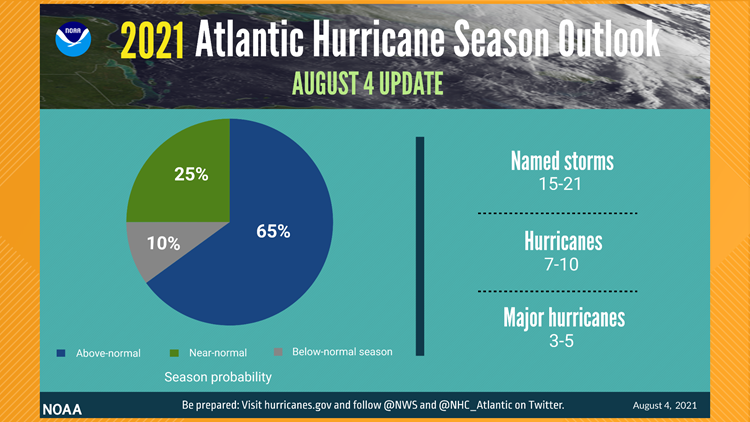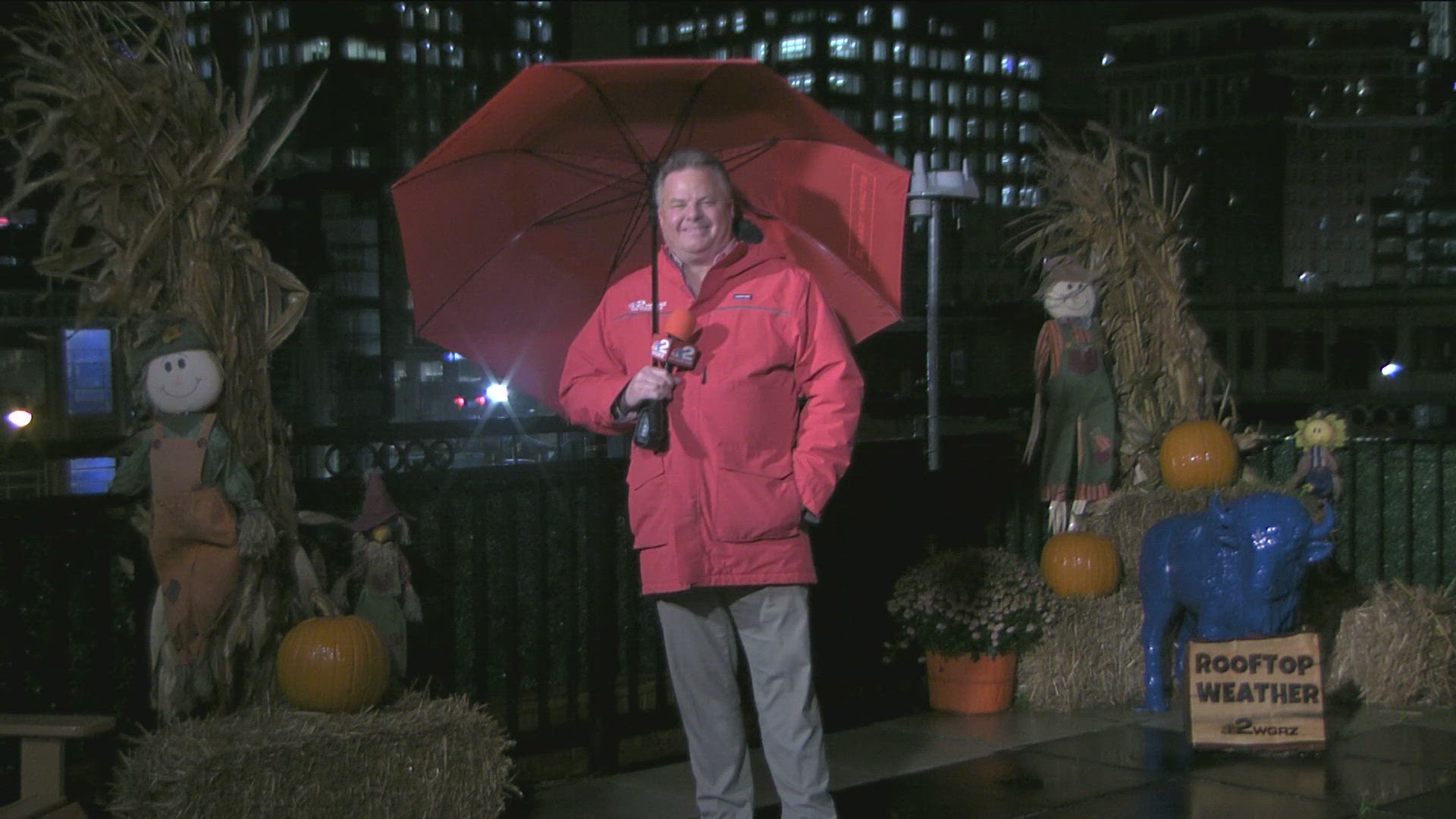BUFFALO, N.Y. — While the tropics across the Atlantic Ocean have been relatively quiet over the past few weeks, NOAA forecasters warn that this hurricane season is showing, "no signs of slowing."
In a release sent out Thursday, forecasters with NOAA's Climate Prediction Center echoed that there are no signs that show the Atlantic Hurricane season outlook should be changed. An above average Atlantic hurricane season for 2021 is still expected, with the potential for a total of 15-21 named storms. This includes 7-10 hurricanes and 3-5 major hurricanes (category 3 or greater).
There have been 5 named storms since the 2021 season began. The last begin hurricane Elsa which also happened to be the 5th earliest named storm on record, developing on July 1t and finally dissipating on July 14th.
And while the season was off to a roaring start, tropical development slowed over the past few weeks. This is due to, in part, the presence of Saharan dust off the continent of Africa. The dry nature of the dust can limit tropical storm development and it is a seasonal phenomenon that usually occurs every year at some capacity.
The peak of hurricane season arrives in early September. The most active timeframe of the Atlantic hurricane season is usually late August to mid October. This is when water temperatures across the Atlantic Ocean and Gulf of Mexico in the tropics are the warmest. Though, water temperatures across the Atlantic are not expected to be as warm as they were during record-breaking 2020 season.
However, Matthew Rosencrans, lead seasonal hurricane forecaster at NOAA’s Climate Prediction Center, noted that the potential return of a La Nina correlating with the seasonal peak of hurricane season is why they've doubled down on their prediction.



